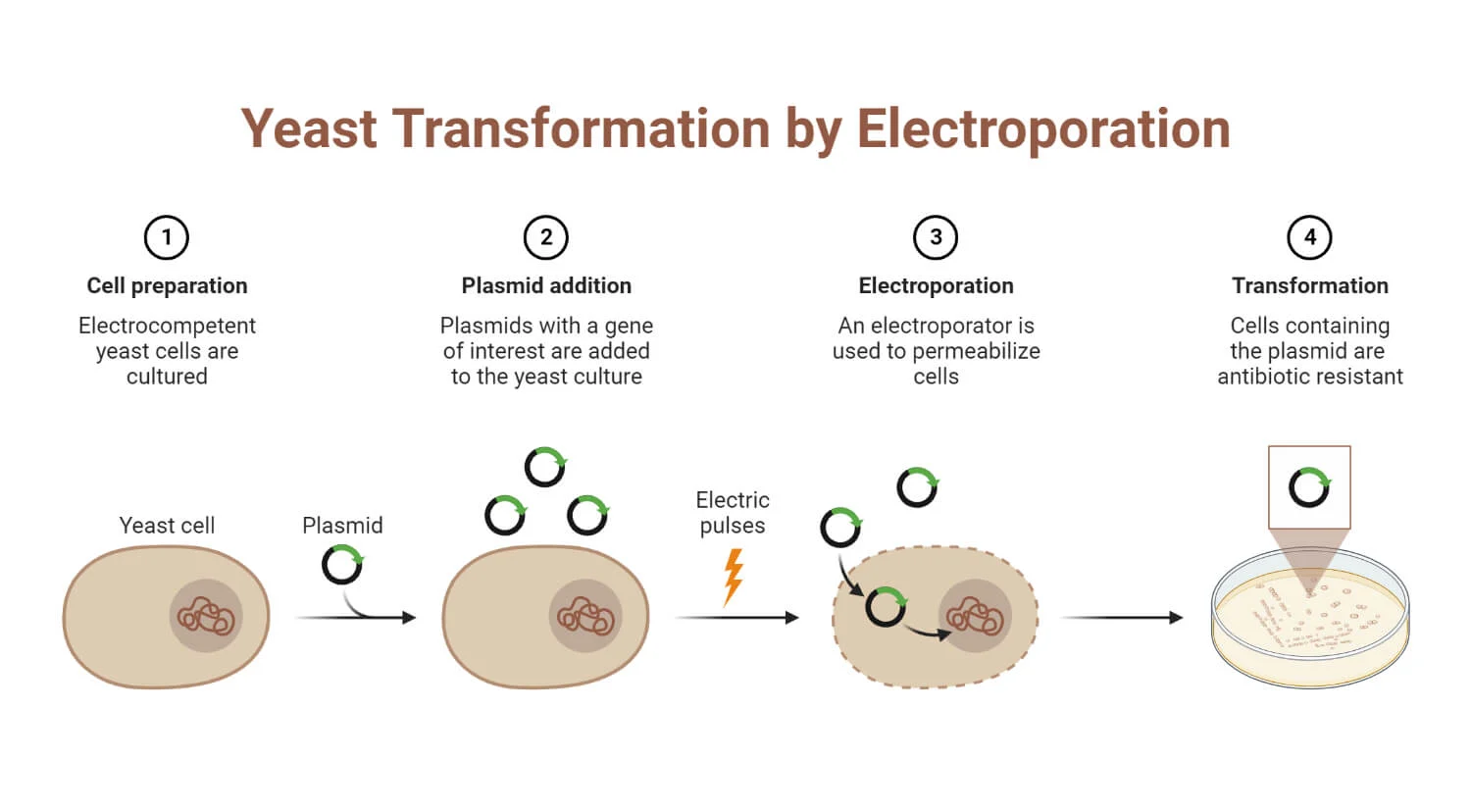Introduction
Electroporation, also called electropermeabilization (EP),
is a physical method of introducing genetic material, proteins, drugs, or other
desired molecules into cells for various purposes with the application of
electric pulses to create temporary pores in the cell membrane, delivering the
molecules to the cells.
Neumann et al. first introduced the concept of
electroporation in 1982. Over the past few decades, electroporation has made
significant advancements. Initially, it was limited to simple in vitro
experiments. It can now be used in gene transfer, gene therapy, drug delivery,
and various in vivo therapeutic approaches.
Electroporation, also known as electropermeabilization, is a
technique used in molecular biology and biotechnology to introduce substances
such as DNA, RNA, or other molecules into cells by creating temporary pores in
the cell membrane through the application of an electric field. This method is
widely used in various applications, including genetic engineering, drug
delivery, and cell-based therapies.
Principle of Electroporation
The working principle of electroporation involves applying
electric pulses to cells, which creates temporary pores in the cell membrane.
These pores allow the entry of molecules, such as DNA, proteins,
drugs, and other substances, into the cells.
The application of electric pulses to cells causes
disruption of the cell membrane. The pulses change the electrical potential
across the membrane, leading to the formation of temporary pores in the phospholipid
bilayer that forms the cell membrane. These pores allow molecules to pass
through the membrane.
Once the electric pulse is turned off, the pores start to
close and the cell returns to its normal state. Some of the molecules taken up
by the cell are trapped inside as the membrane reseals. If the electric field
allows the membrane defects to reseal, it is reversible electroporation, while
if the defects persist, it is irreversible electroporation, leading to cell
death.
Once the molecules enter the cells through the temporary
pores, they can interact with the cellular mechanism, influencing cellular
processes and functions.

Electroporation Steps
Steps of Electroporation
The specific steps and materials involved in electroporation
may vary based on the cell type, and electroporation equipment. The steps below
provide a general overview of the electroporation process.
Cell Preparation:
- Cells are first harvested and suspended
in an electrolyte buffer solution. This buffer helps conduct the electric
current and maintains the integrity of the cells during the
electroporation process.
Electroporation Chamber:
- The cell suspension is placed in an
electroporation chamber or cuvette, which is typically made of a
conductive material like metal or plastic. The cuvette has two parallel
electrodes that are positioned on opposite sides of the cell suspension.
Application of Electric Field:
- An electric field is applied across the
cell suspension by connecting the electrodes to an electrical pulse
generator. The electric field disrupts the cell membrane, creating
temporary pores or holes in the lipid bilayer.
Pore Formation:
- When the electric field is applied, it
causes a rearrangement of the lipid molecules in the cell membrane. This
rearrangement leads to the formation of transient nanopores in the
membrane.
Substance Uptake:
- During the brief period when these
pores are open, exogenous molecules (e.g., DNA, RNA, proteins, or drugs)
present in the surrounding medium can diffuse into the cell through the
pores. This allows for the delivery of foreign genetic material or other
substances into the cell's cytoplasm.
Pore Re-sealing:
- Once the electric pulse is terminated,
the pores begin to reseal. The resealing process occurs relatively
quickly, and the cell membrane returns to its normal state.
Cell Recovery:
- After electroporation, the treated
cells are typically transferred to a growth medium, allowing them to
recover and resume normal cellular functions. Some cells may not survive
the process, but those that do can express the introduced genetic
material or respond to the delivered substances.
The parameters of
the electric field, such as voltage, pulse duration, and pulse number, are
crucial factors in determining the efficiency and safety of electroporation.
Optimizing these parameters is essential for achieving successful delivery of
molecules into the target cells while minimizing cell damage.
Electroporation is a
versatile and powerful technique widely used in biological research and various
biotechnological applications, including gene therapy, CRISPR-Cas9 genome
editing, and the development of genetically modified organisms.
Applications of Electroporation
Some major applications of electroporation are:
- Electroporation
is widely used in the transformation of bacterial cells to make them
competent and capable of taking up foreign DNA for various purposes like
recombinant protein production, cloning, and other
biotechnological applications.
- Electroporation
is also used in transfection. Similar to bacterial
transformation, electroporation allows the manipulation of eukaryotic
cells by engineering their genetic material.
- Electroporation
is widely used in genetic engineering to introduce foreign DNA into cells.
For example, it can be used for the transformation of plant cells, allowing the
introduction of foreign DNA into plants for crop improvement.
- Electroporation
can be used for delivering drugs and vaccines.
It allows the delivery of large substances that cannot easily cross the
skin. DNA vaccines against various diseases, such as plague, and SARS-CoV-2,
have also been developed using electroporation as a delivery method.
- Electroporation
is also used in gene therapy to deliver modified or additional genetic
material.
- Irreversible
electroporation is used in the treatment of cancer. This method uses
high-voltage electric pulses to cause permanent damage and cell death in
tumors.

Yeast Transformation Electroporation
Advantages of Electroporation
- Electroporation
is a versatile method that can be used in various cell types, including
bacteria, yeast, plant cells, and mammalian cells.
- Electroporation
can be used to deliver genetic material into cells that are difficult to
transfect.
- Electroporation
provides consistent and reproducible results.
- Electroporation
does not require the use of vectors for gene
transfer. It is a safe and non-toxic method.
Disadvantages of Electroporation
- High-voltage
electric pulses used in electroporation can cause cell damage or cell
death if the parameters are not optimized.
- Electroporation
requires specialized equipment, including an electroporator, cuvettes, and
appropriate voltage settings.
- Electroporation
may lead to variable transfection efficiency. Some cells may take up the
introduced molecules more efficiently than others.
- Very
large DNA fragments or complex structures may not be efficiently delivered
into the cells.
- Cells are delicate following electroporation and must be treated carefully during recovery to avoid cell death.









Comments